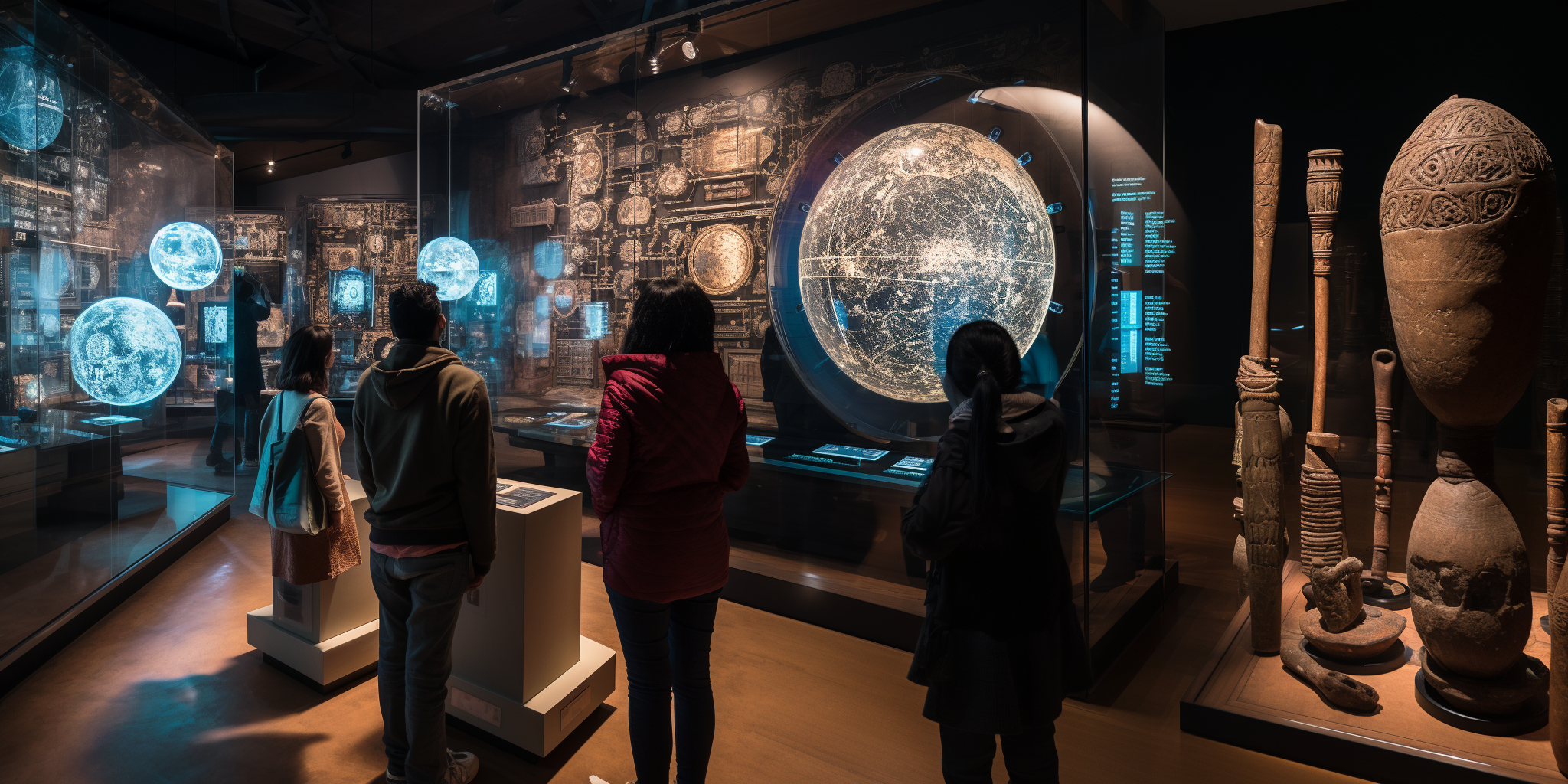
AI-generated scene of an archeological museum using AI-powered HUDs to digitally augment the displayed artefacts with history, functionality, and significance [Photo generated via Midjourney by Ajaibghar]
Artificial Intelligence, in the simplest words, is an attempt for computers to mimic human thinking. This includes solving problems, making decisions, and even being creative.
The media has been buzzing with terms like ChatGPT, Midjourney, large language models and much more. But the world of AI is split into two simple large categories – Traditional AI and Generative AI.
-
Traditional AI
Traditional AI focuses on specific tasks, following predefined rules and making decisions based on data. It excels within its rules but doesn’t create new things. Think about it in the terms of your Youtube recommendations, over time it is learning about all the things that you like and then making new recommendations in a predictable way. But just because it knows your taste, doesn’t mean it could create a video for you!
-
Generative AI
Generative AI (GenAI) creates novel content, such as stories or images, by learning patterns from data. It’s like an imaginative friend crafting original ideas, expanding into text, images, music, and code. This is like ChatGPT answering your questions, or helping you rewrite reports, or creating altogether new images.
But where does this all converge with museums and the arts and culture sector? While the use of AI in mainstream industries seems to be apparent, direct and relevant to business growth, where do museums come in?
As we see the growth of AI based products and services, there are several areas we believe would benefit from integrating AI –
- Archiving – AI can be used for classifications and data management of digitally managed archives. It can assist curators in building new connections and tracking data across the archival system.
- Customer services – Customer tracking and issue management can be handled through chatbots.
- Visitor Insights & Predictions – Predictive AI tools can be extremely useful to understand visitor behaviour, trends and focus on improving the museum’s services and programming.
- Integration in visitor journeys – Narrativised characters or avatars can guide visitors through the museum as per their interests. AI can be used to add an exciting layer of interaction in the exhibition’s experience.
- Targeting younger visitors – Digital natives and gen-z visitors will be more inclined to engage and visit the museum if technology is embedded in the visitor experience.
Let us look at a few examples of AI being used in the museum and culture sector –
- The AI Connections Table at the Henry Ford, conceptualised and built by Blue Cadet, is a great example of AI integration. It uses a mix of curator-driven concepts with AI to generate interconnections with the digitised material of the museum.
- MuseSkôp built by Ajaibghar, is able to use anyone’s phone camera to identify artefacts specific to a museum and unveils hidden stories & information as a digital layer over the camera view. Using AI driven image classification technology, we can “train” the AI to identify landmark points on artworks or artefacts and reveal related stories & facts as layered text or media. Keeping in mind accessibility of the internet and technology in Indian museums, it works well across most smartphones and is an ideal companion for exhibits without the bells and whistles.
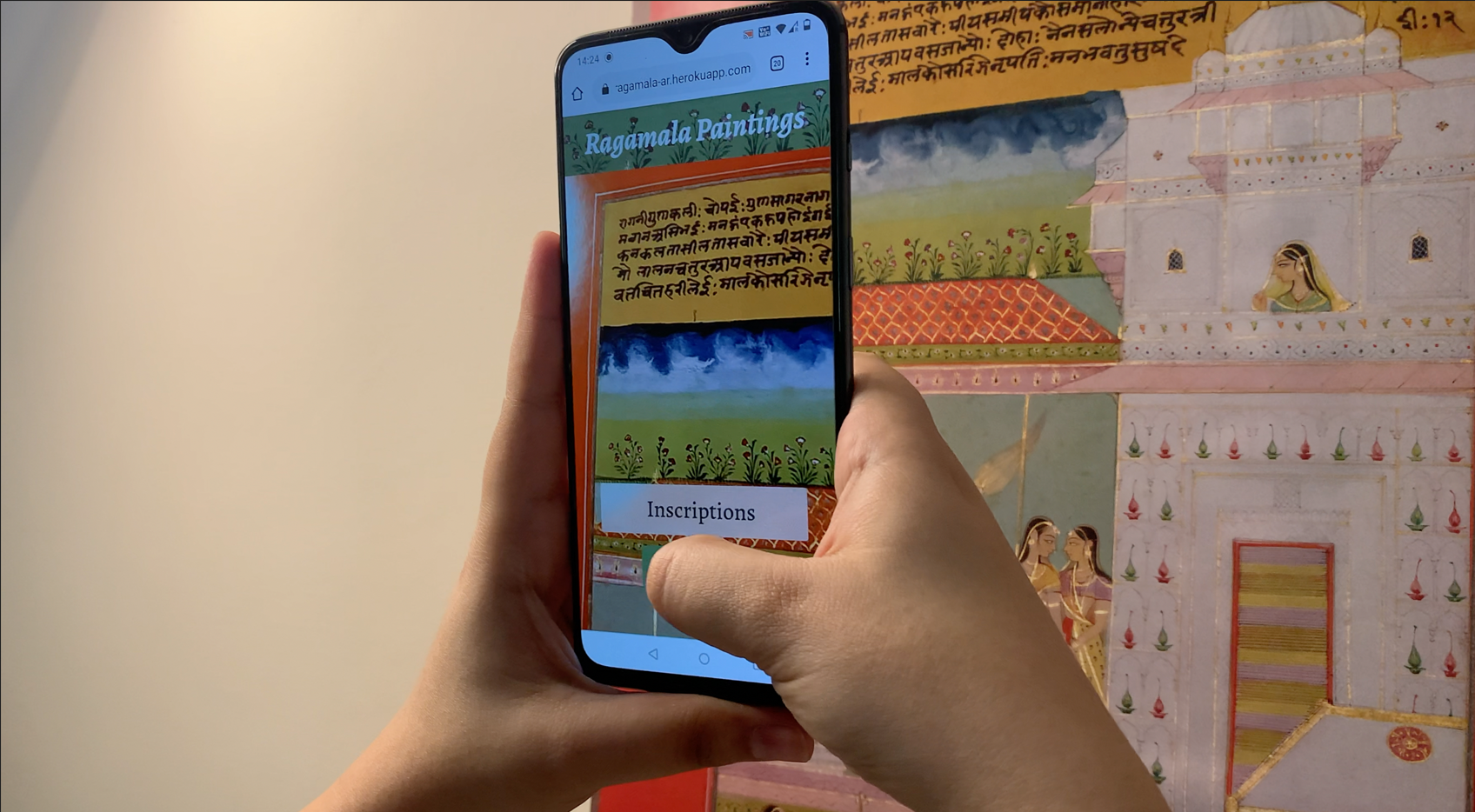
A viewer using MuseSkôp to learn about the story depicted in a Ragamala painting by focusing their phone camera on different parts of the painting [Photo by Ajaibghar]
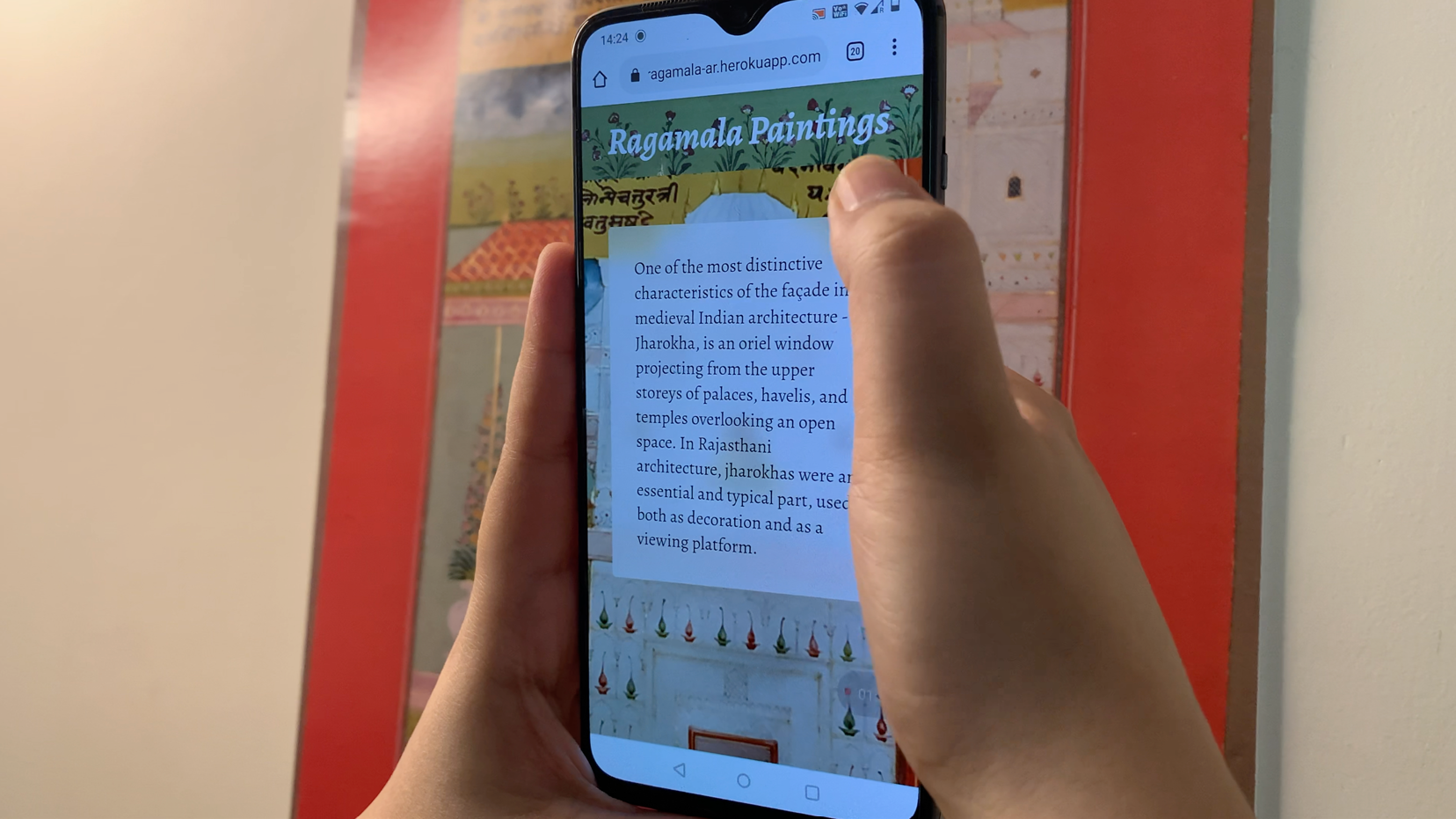
MuseSkôp reveals the related information to the viewer in the form of text, images or audio based on the specific landmark that the viewer is seeing at the moment through their camera [Photo by Ajaibghar]
MuseSkôp is an AI intervention in the very act of looking.
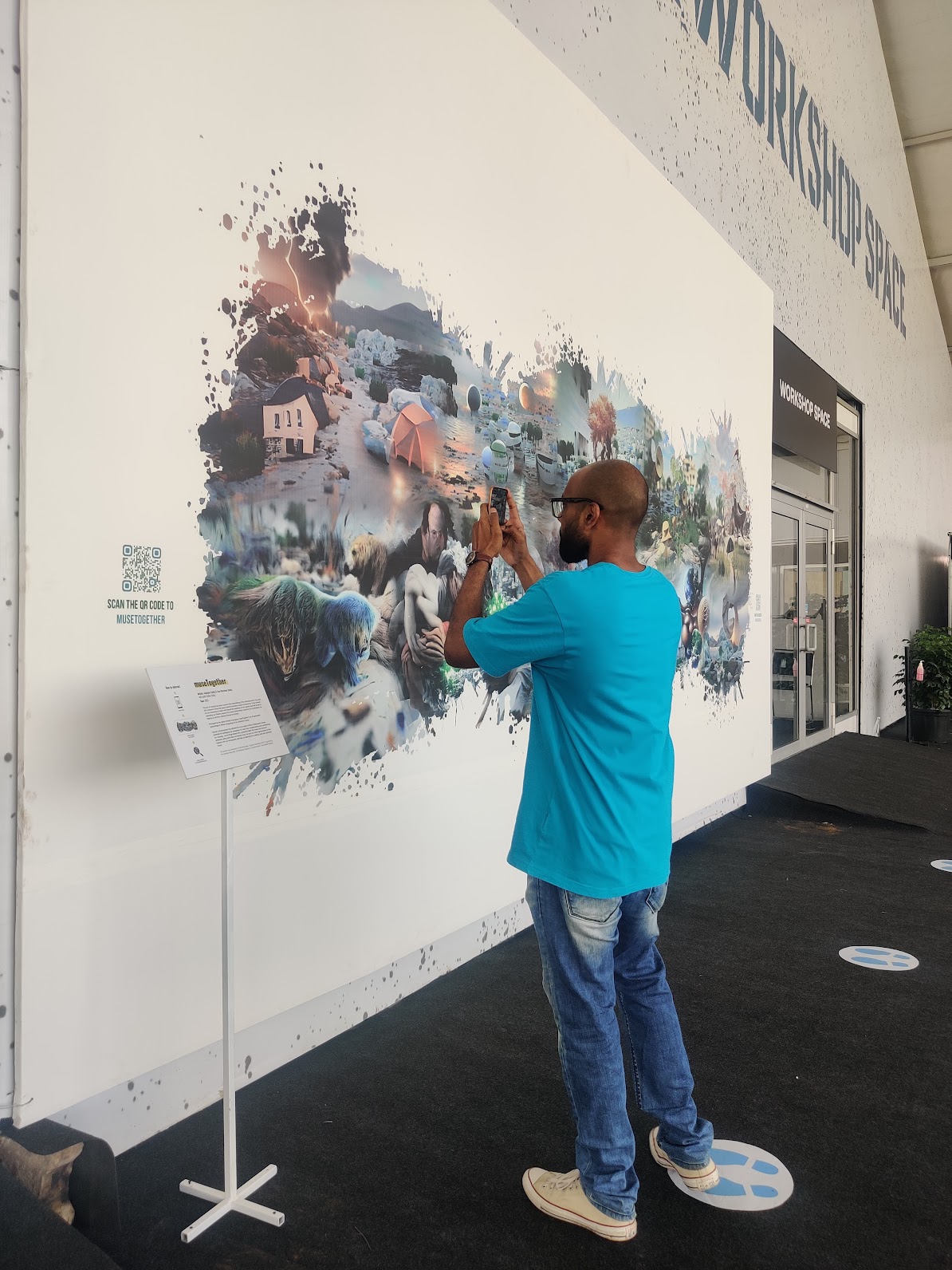
A visitor at India Art Fair 2022, interacting with museTogether mural using MuseSkôp. museTogether commissioned by BeFantastic, is an AI-interactive mural that serves as an exhibition in itself by opening up multiple artworks triggered by using MuseSkôp over different parts of the mural [Photo by Ajaibghar]
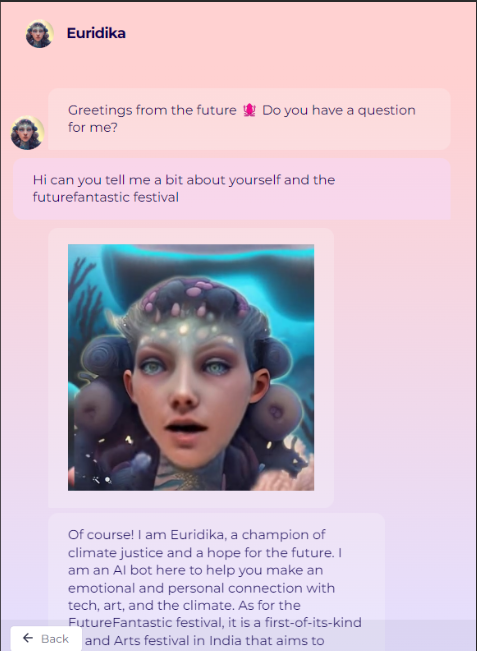
A screenshot of a chat with Euridika, the AI based ambassador for the tech art festival FutureFantastic, Bengaluru. [Photo credit: From the website of FutureFantastic]
So, in the realm of AI, certain questions naturally arise for us as art, culture, and museum spaces –
- How might we harness AI to unveil narratives, cultural histories, and connections that remain untapped within our archives and resources?
- In what ways can we craft more immersive and personalised cultural experiences for those who visit our museums?
- How can we transcend the physical constraints of the museum space and offer an extended museum experience?
- What technological strategies can we employ to encourage young adults, children, and families to explore museums and kindle an interest in our collections?
- How can we imaginatively infuse gamification into museum experiences to foster deeper engagement?
Given its inherent capabilities, AI stands poised to creatively and organically address these objectives within the museum domain.
Author Bio
Nanditi & Computational Mama are the co-founder duo behind Ajaibghar, a creative technology studio for art, culture & futures. They began as Museum Consultants & Culture-Tech Strategists and eventually developed Ajaibghar as a transdisciplinary studio & lab in the arts & culture space utilising the strengths of emerging technology, experience design, cultural strategy & community building.







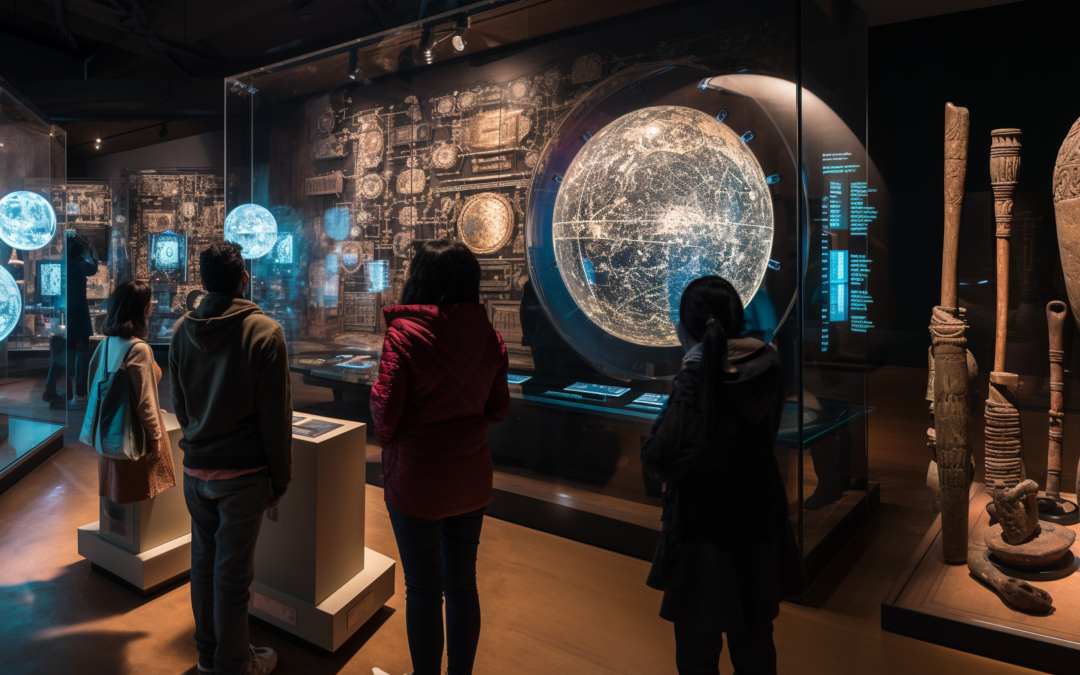
Interesting but you are tackling only phone users to go to a museum
School children need to go as well as Sr. Citizens.
Our recent trip to Indore took us to the Ahilyabai museum beautifully done up affordable but too much material to read audio video would have been amazing
AI could help there.